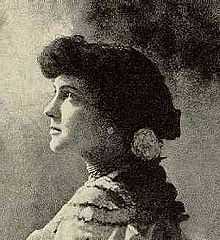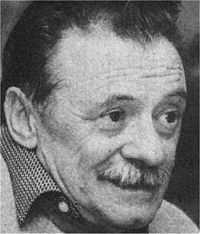Italian Uruguayan
| ||||||
| Total population | ||||||
|---|---|---|---|---|---|---|
|
1,055,220[1] est. 42% of the population | ||||||
| Regions with significant populations | ||||||
| Throughout Uruguay | ||||||
| Languages | ||||||
| Rioplatense Spanish. Minority speaks Italian and Italian dialects. | ||||||
| Religion | ||||||
| Roman Catholicism | ||||||
| Related ethnic groups | ||||||
| Italians, Italian Argentine, Italian Brazilian, Italian Chilean, Italian Mexican, Italian American, Italo-Venezuelans | ||||||
An Italian Uruguayan (Spanish: italo-uruguayo, Italian: italo-uruguaiano) is a Uruguayan citizen of full or partial Italian ancestry.
Characteristics
The recorded presence of Italians in Uruguay started with the founding of Montevideo. Italians began arriving to Uruguay in great numbers in the 1870s, and this migratory flow continued to the 1960s.
The Italian settlement, along with the Spanish, formed the backbone of today's Uruguayan society. Like its neighbour country Argentina, the culture of Uruguay exhibits significant connections to Italian culture; in terms of language, customs and traditions.
Historians calculate that in the generation of Uruguaians born after 1990 nearly 68% (or 2/3 of the total) has Italian roots.
History
The first Italians arrived in Spanish and Portuguese colonies of South America in the 16th century. In the area of what is now Uruguay the first Italians were primarily from the Republic of Genoa and worked in the business and commerce related to the transoceanic shipping between "old and new world". It is notable that the first settler in Montevideo was an Italian, Giorgio Borghese (who Hispanicized his name to Jorge Burgues). The Italian population continued to grow into the 19th century and by the time the constitution of Uruguay was adopted in 1830, there were thousands of Italian-Uruguayans - mostly in the capital, Montevideo.
Immigrants from other areas of Italy followed, e.g., Lombardi exiles, craftsmen, farmers, the followers of Garibaldi, Southern Italians of various trades, and even those active in variety of other ways, including a minority of adventurers.
During the period 1875 to 1890 Italians were the larger part of a wave of immigration to Uruguay from Spain and Italy. This continued through the twentieth century until the early 1970s, and was followed by a sharp reduction, coinciding with economic and political upheavals in both Uruguay and Italy. Afterwards, Italian immigration continued to decline because of greater attraction exerted by Argentina, Brazil and the United States. By the end of the 20th century, the trend finally began to run out. As of 2003 there were only 33,000 first generation Italians in the South American country , but many Uruguayans were well aware of their Italian ancestry. By 1976 Uruguayans of Italian descent numbered over one million and three hundred thousand (i.e. almost 45% of the total population, including Italian-Argentine residents in Uruguay). High concentrations are found in Montevideo, and the city of Paysandú (where almost 65% of the population is of Italian origin).
Italian community
The first Italian immigrants who arrived in the land were almost all of the origin of the Genoese, Piedmontese, Neapolitan, Sicilian and Venetian.
In the first half of 19th century there was the participation of Giuseppe Garibaldi to the wars for independence of Uruguay, and many Italian patriots in Uruguay were attracted to the ideas of the leader.
The political movement which joined many residents of the Rio de la Plata with Italian was called Current Garibaldina. In recognition of Garibaldi there were many tributes to his memory as a "Avenida" (Course) of Montevideo with its name, a monument to his memory in the city of Salto, el 'Italian Hospital of Buenos Aires, among others.
Between the end of the 19th and early 20th century, came the third phase of immigration coming from Italy.
The Italians who arrived in this period, as well as in the fourth stage after the Second World War, gave a great contribution to Uruguayan architecture and gastronomy. In this period there was the foundation of the Italian Hospital of Montevideo, which last decade of the 19th century, and which bears the name of an Italian monarch, King Umberto I of Italy.
Italians who emigrated to Uruguay in the 19th century worked mainly in construction, trade and agriculture. Some were able to open the road as politicians and businessmen in the 20th century. Francesco Piria, born in Genoa, became one of the leading manufacturers of the South American state, creating even a seaside town that still bears his name, Piriápolis. Various Italo-Uruguayans became Presidents of Uruguay (Addiego, Demicheli, Gabriel Terra, and Baldomir Ferrari Sanguinetti) and writers of international renown (such as Delmira Agustini and Mario Benedetti).
The Italian community during the Presidencies of Gabriel Terra and Baldomir Ferrari
The period of the 1930s was a time when the Italian community reached a primary importance in Uruguayan society. Coincided with the rise to power dell'Italia-Uruguayan Gabriel Terra from 1931 to 1938 and his successor (and relatives) Baldomir Ferrari (1938–1943). The Italian-Uruguayan President Gabriel Terra got the dam of the hydroelectric dam "Rincón del Bonete, on the Rio Negro, was built and partially financed mainly by the Italian government in the years of the two Presidents. He openly appreciated Italian Fascism and tried to imitate some characteristics and corporate policies.
In Montevideo, for example, there was a political Fascio with 1,200 members, 150 volunteers who gave Italian-Uruguayans the Italian conquest of Ethiopia in 1936. The President was able to obtain land and funding support from Mussolini (and Hitler) to build the dam on the Rio Negro, creating the largest artificial lake in South America. In addition, Terra promoted the beginning of the process of 'industrialization by means of the Italian companies.
The Italian diplomat Mazzolini said that Mussolini considered Uruguay as the most "Italian" state of the Americas, with which to make a possible future political and ethnic-racial alliance. The Italian language gained considerable importance in Montevideo in those years and became compulsory in secondary schools in Uruguay in 1942, under Ferrari.
Demographics
An overall estimate of Italian immigrants to Uruguay from its independence until the 1960s century has is 350,000 but, given the balance of migration, must be halved. Over one third of the Uruguayan population have an Italian surname.
The flow of Italians to Uruguay can be broken into several waves:
1) the two decades of 1830-50, in which at least 20,000 immigrants arrived, almost all from Piedmont and Liguria.
2) the following decade, during which an equally high number landed in Montevideo (about 25,000 from Lombardy and Sardinia).
3) the 1860s and 1870s, of about 90,000 Italians from across the country.
4) the last decades of the 19th and early 20th century, characterised by mass migration, stimulated by propaganda and prepaid journey, but generally poorly trained and illiterate. 110,000 reached Montevideo.
5) the 20th century, after the First World War(about 15,000).
49% of Italians currently residing in Uruguay come from the northern parts of the peninsula, 17% from central regions and 34% from the south. The Italian regions of origin: Campania, with 5,231 residents (16% of total), Lombardy (5,029), Piedmont (4,250), Lazio (3,353) and Liguria (3,018).
In 2007 Italian citizens (including Uruguayan dual citizenship) resident in Uruguay were 71,115. The entire Italian community is held in high esteem by the Uruguayan population, also by a marked process italianisation in society especially in the local cuisine (like caruso sauce) and the local dialect (such as Lunfardo, which probably derives from the dialect word "Lumbarda" of immigrants from Lombardy).
In Uruguay, although the Italian influence was more isolated (only 27% of the Italo-Uruguay reside outside the metropolitan area of the capital), there were different Italian communities and founded several cultural entities (as in Rivera, the border with Brazil).
Alfredo Baldomir Ferrari, President of Uruguay from 1938 to 1943. In 1942 decreed the obligation to study the 'Italian in secondary schools in Uruguay. Paysandú A - the third of the city, near the border with Argentina - saw the greatest Italian influence, it is currently estimated that over 60% of its population of about 80,000 inhabitants is of Italian origin. Furthermore, there is still widespread, the Italian language, due to the fact that Italian language is taught in all schools. Among the companies-Italian Uruguay most famous of the city must mention the EU and benevolence, the Scuola Italiana and the Italian Federation of Paysandú.
The Group of Paysandú Lombardi keeps cultural ties with the Italian emigration, especially with Lombardy.
Societies
Italian Associations in Uruguay are relatively numerous. The main ones are:
Scuola Italiana di Montevideo Circle Lucano Association of Sons of Tuscany Association Veneti in Uruguay Group of Paysandú Lombardi Group Trentini Rivera Association of Lombards in Montevideo (Associazione Lombarda di Montevideo)
Italian in education
The Italian-Uruguayan President Alfredo Baldomir Ferrari in 1942 made mandatory the study of Italian in state secondary schools.
This legislation has made Uruguay the only state in the Americas where Italian has had an official status in the local teaching which is equal to that of the national language.
In Montevideo there is a private school (Scuola Italiana di Montevideo) attended by the upper-class of the Italian community in the capital. There are also plans to open an Italian university.
Further reading
- Goebel, Michael. "Gauchos, Gringos and Gallegos: The Assimilation of Italian and Spanish Immigrants in the Making of Modern Uruguay 1880–1930," Past and Present (2010) 208(1): 191-229.
- Bresciano, Juan Andrés. "L'Immigrazione Italiana in Uruguay Nella Piu Recente Storiografia (1990-2005)." ["Italian immigration to Uruguay in the most recent historiography, 1990-2005"] Studi Emigrazione, June 2008, Vol. 45 Issue 170, pp 287–299
See also
References
- ↑ "Italiani nel Mondo: diaspora italiana in cifre" (in Italian). Migranti Torino. 30 April 2004. Retrieved 22 September 2012.
| |||||||||||||||||||||||||||||||||||||||||||||||||||
| ||||||||||||||||



